Key Takeaways
1. Capture Ideas That Resonate to Build Your Second Brain
Knowledge isn't just wise quotations from long-dead Greek philosophers in white togas. It's not just the teachings found within thick textbooks written by academics with advanced degrees.
Your Second Brain is a personal knowledge management system. It's a digital commonplace book where you capture ideas, insights, and information that resonate with you. This system helps you extend your thinking beyond the limitations of your biological brain, allowing you to store and process vast amounts of information efficiently.
Capture criteria:
- Does it inspire you?
- Is it useful?
- Is it personal?
- Is it surprising?
By capturing what resonates, you create a curated collection of knowledge that reflects your unique interests and perspectives. This practice helps you develop your thinking, sparks creativity, and provides a foundation for future projects and ideas.
2. Organize Information for Actionability Using PARA
PARA can be used across all the different places where you store information, meaning you can use the same categories and the same rules of thumb no matter where you keep content.
PARA is an organizational system designed for actionability. It consists of four main categories: Projects, Areas, Resources, and Archives. This system helps you organize information based on how actionable it is, rather than by subject or type.
PARA categories:
- Projects: Short-term efforts with specific outcomes
- Areas: Ongoing responsibilities in your work and life
- Resources: Topics or interests that may be useful in the future
- Archives: Inactive items from the other categories
By organizing information this way, you ensure that your most relevant and actionable ideas are always at your fingertips. This system is flexible and can be applied across various digital platforms, creating a consistent organizational structure for all your information.
3. Distill Notes to Find the Essence Using Progressive Summarization
Progressive Summarization is the technique I teach to distill notes down to their most important points. It is a simple process of taking the raw notes you've captured and organized and distilling them into usable material that can directly inform a current project.
Progressive Summarization enhances the discoverability of your notes. This technique involves highlighting and summarizing your notes in layers, making it easier to quickly grasp the main ideas when you revisit them later.
The four layers of Progressive Summarization:
- Original note
- Bold the main points
- Highlight the most important of those bolded points
- Write an executive summary in your own words
By distilling your notes in this way, you make them more actionable and easier to review. This process also helps you internalize the information and connect it to your existing knowledge, enhancing your understanding and creativity.
4. Express Your Ideas by Showing Your Work
The purpose of knowledge is to be shared. What's the point of knowing something if it doesn't positively impact anyone, not even yourself?
Expressing your ideas is the ultimate goal of building a Second Brain. It's about turning your collected knowledge into tangible outputs that can benefit others and contribute to your personal and professional growth.
Ways to express your ideas:
- Writing articles or blog posts
- Creating presentations or workshops
- Developing products or services
- Sharing insights on social media
- Engaging in meaningful conversations
By regularly expressing your ideas, you not only contribute to the world but also reinforce your own learning and understanding. This practice helps you discover connections between different pieces of information and develop your unique perspective on various topics.
5. Create Intermediate Packets for Efficient Knowledge Work
Intermediate Packets are the concrete, individual building blocks that make up your work.
Intermediate Packets are reusable units of work. These are smaller, modular pieces of content that you can mix and match to create larger projects. By thinking in terms of Intermediate Packets, you can work more efficiently and flexibly.
Types of Intermediate Packets:
- Distilled notes
- Outtakes from previous projects
- Work-in-process documents
- Final deliverables
- Documents created by others
Creating and reusing Intermediate Packets allows you to leverage your past work, making you more productive and creative. It also helps you break down large projects into manageable chunks, making it easier to make progress even in short periods of time.
6. Develop Essential Habits for Digital Organization
Building a Second Brain is not just about downloading a new piece of software to get organized at one point in time; it is about adopting a dynamic, flexible system and set of habits to continually access what we need without throwing our environment (and mind) into chaos.
Consistent habits are crucial for maintaining your Second Brain. These habits help you keep your digital environment organized and functional, ensuring that your system remains useful over time.
Essential habits for digital organization:
- Project Checklists: Use standardized checklists for starting and completing projects
- Weekly and Monthly Reviews: Regularly review and update your system
- Noticing Habits: Take advantage of small opportunities to improve your notes
By developing these habits, you create a sustainable system that grows and evolves with you. These practices help you maintain order in your digital world without requiring massive time investments or complete overhauls.
7. Shift Your Mindset from Scarcity to Abundance
The biggest shift that starts to occur as soon as you start creating a Second Brain is the shift from viewing the world through the lens of scarcity to seeing it through the lens of abundance.
An abundance mindset transforms your relationship with information. Instead of hoarding information out of fear of missing out, you learn to curate and leverage the knowledge you have. This shift allows you to focus on creating value rather than endlessly consuming content.
Benefits of an abundance mindset:
- Less anxiety about information overload
- More confidence in your ability to find relevant information
- Greater willingness to share your knowledge
- Increased focus on creating and contributing
By adopting an abundance mindset, you become more discerning about the information you consume and more generous with the knowledge you share. This perspective enhances your creativity and productivity while reducing stress and overwhelm.
8. Embrace the Creative Process of Divergence and Convergence
If you look at the process of creating anything, it follows the same simple pattern, alternating back and forth between divergence and convergence.
Creativity involves alternating between exploration and focus. Divergence is about gathering ideas and possibilities, while convergence is about narrowing down and refining those ideas into a finished product.
The creative process:
- Divergence: Gather ideas, research, and inspiration
- Convergence: Focus on developing and refining the best ideas
- Repeat as necessary
Understanding this process helps you navigate the creative journey more effectively. It allows you to balance the need for exploration with the necessity of producing tangible results, leading to more successful and satisfying creative work.
9. Leverage Project Checklists for Consistent Execution
The successful start of the project is more or less left to chance.
Project checklists ensure consistent execution of your work. By creating standardized checklists for starting and completing projects, you can ensure that you're making the most of your Second Brain and maintaining a consistent workflow.
Sample project kickoff checklist:
- Capture current thoughts on the project
- Review relevant folders or tags
- Search for related content across all folders
- Move or tag relevant notes to the project folder
- Create an outline and plan the project
Using checklists like these helps you start projects with intention and finish them effectively. They ensure that you're leveraging your existing knowledge and resources, leading to more efficient and successful project outcomes.
10. Conduct Regular Reviews to Maintain Your Second Brain
The Weekly Review is grounded and practical, I recommend doing a Monthly Review that is a bit more reflective and holistic.
Regular reviews keep your Second Brain relevant and functional. Weekly reviews help you process new information and stay on top of your commitments, while monthly reviews allow you to reflect on your bigger picture goals and systems.
Components of a monthly review:
- Review and update goals
- Review and update project list
- Review areas of responsibility
- Review someday/maybe tasks
- Reprioritize tasks
By conducting these reviews consistently, you ensure that your Second Brain remains aligned with your current priorities and goals. This practice helps you maintain a clear mind and stay focused on what's most important.
11. Practice Noticing Habits to Enhance Your System
It's crucial to stay organized, but it needs to be done a little at a time in the flow of our normal lives.
Small, consistent actions maintain and improve your Second Brain. Noticing habits involve taking advantage of small opportunities to enhance your notes and system as you go about your daily work.
Examples of noticing habits:
- Improving note titles for better discoverability
- Moving notes to more relevant folders
- Highlighting key points in notes
- Merging related notes
By practicing these habits, you continuously improve your Second Brain without requiring large time investments. This approach ensures that your system remains useful and up-to-date with minimal effort.
12. Cultivate Self-Expression and Share Your Knowledge
There are problems in the world that you are uniquely equipped to solve.
Your unique perspective and knowledge are valuable. Building a Second Brain isn't just about personal productivity; it's about developing your ideas and sharing them with the world. Your experiences and insights can make a significant impact on others.
Ways to cultivate self-expression:
- Start a blog or podcast
- Teach workshops or courses
- Write articles or books
- Engage in meaningful conversations
- Create products or services that solve problems
By sharing your knowledge and ideas, you not only contribute to the world but also deepen your own understanding. This practice of self-expression can lead to personal growth, professional opportunities, and a sense of fulfillment in knowing that you're making a positive impact.
Last updated:
FAQ
What's Building a Second Brain about?
- Organizing digital life: Tiago Forte's book offers a method to manage the vast amount of information we encounter daily, helping readers organize their digital lives effectively.
- Second Brain concept: It introduces the idea of a "Second Brain," a digital archive that stores valuable memories, ideas, and knowledge to support decision-making and creativity.
- Enhancing productivity: By transforming our relationship with information, the book aims to unlock creative potential and improve efficiency in work and personal projects.
Why should I read Building a Second Brain?
- Addressing information overload: The book provides practical strategies to manage and utilize the overwhelming amount of content we consume.
- Improving creativity and productivity: It helps harness knowledge and ideas, leading to better decision-making and more creative output.
- Timeless principles with modern tools: Combines timeless knowledge management principles with contemporary technology, making it relevant for today’s digital landscape.
What are the key takeaways of Building a Second Brain?
- The CODE Method: Introduces the four steps—Capture, Organize, Distill, and Express—to help build and utilize your Second Brain effectively.
- Personal Knowledge Management (PKM): Emphasizes the importance of PKM to manage knowledge and information flow, enhancing cognitive abilities.
- Action-oriented organization: The PARA system (Projects, Areas, Resources, Archives) helps categorize information based on its actionability.
What is the CODE Method in Building a Second Brain?
- Capture: Collect valuable insights and ideas from various sources, saving only what resonates with you.
- Organize: Categorize notes using the PARA system to keep track of actionable information related to current projects.
- Distill: Refine notes to highlight the most important points, making them easily discoverable for future use.
- Express: Share insights and knowledge, turning captured information into actionable outputs that can benefit others.
What is the PARA system mentioned in Building a Second Brain?
- Four categories: PARA stands for Projects, Areas, Resources, and Archives, which are the main categories for organizing notes and files.
- Actionability focus: Prioritizes how actionable information is, allowing quick access based on current goals and responsibilities.
- Dynamic organization: Designed to be flexible, enabling movement of notes between categories as projects and interests evolve.
How does Building a Second Brain address information overload?
- Practical strategies: Offers actionable techniques to filter and manage vast amounts of information, reducing anxiety and overwhelm.
- Creating a knowledge vault: Building a Second Brain allows storage and organization of valuable insights for easy access when needed.
- Encouraging intentional consumption: Promotes a mindful approach to consuming content, focusing on quality over quantity.
What is Progressive Summarization in Building a Second Brain?
- Layered highlighting technique: Involves highlighting key points and further distilling those highlights into concise summaries.
- Enhancing discoverability: Creates layers of information, making it easier to find and recall important insights.
- Facilitating deeper understanding: Encourages active engagement with notes, leading to a better grasp of the material.
What are Intermediate Packets in Building a Second Brain?
- Building blocks: Intermediate Packets (IPs) are reusable components of your work, such as distilled notes and outtakes.
- Five types: Include distilled notes, outtakes, work-in-process documents, final deliverables, and documents created by others.
- Efficiency: Creating and reusing IPs saves time and effort in future projects, allowing you to build on past work.
How can I implement the habits discussed in Building a Second Brain?
- Project Checklists: Use checklists for project kickoff and completion to ensure consistent starts and finishes.
- Weekly and Monthly Reviews: Conduct regular reviews to assess progress, update goals, and clear your digital workspace.
- Noticing Habits: Develop the habit of noticing small opportunities to improve notes and organization.
What mindset shifts are encouraged in Building a Second Brain?
- From scarcity to abundance: Encourages viewing information as abundant, fostering creativity and reducing anxiety.
- From obligation to service: Emphasizes serving others with your knowledge, encouraging sharing insights and experiences.
- From consuming to creating: Advocates for transitioning from passive consumption to active creation and expression.
What does Tiago Forte mean by "Second Brain"?
- External knowledge system: A digital repository to store and organize thoughts, ideas, and knowledge, offloading cognitive burden.
- Enhancing cognitive abilities: Acts as an extension of your mind, helping remember and connect ideas without relying solely on biological memory.
- Facilitating creativity: A structured system for knowledge allows easier access to insights and inspiration, leading to greater creative output.
What are some common mistakes novice notetakers make according to Building a Second Brain?
- Over-highlighting: Highlighting too much information makes it difficult to discern the most important points later on.
- Highlighting without purpose: Capturing notes without clear intention can lead to clutter and confusion.
- Neglecting to distill: Failing to summarize and refine notes results in a collection of information that is hard to navigate and utilize effectively.
Review Summary
Building a Second Brain by Tiago Forte receives mixed reviews. Many praise its practical approach to personal knowledge management, highlighting the CODE framework and PARA filing system as valuable tools for organizing information. Readers appreciate the book's insights on productivity and creativity. However, some criticize it for being overly verbose and containing redundant information. Critics argue that the core concepts could have been conveyed more concisely. Despite the mixed opinions, many readers find the book's strategies helpful in managing digital information overload and improving their productivity.
Similar Books
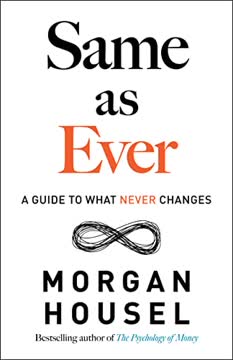
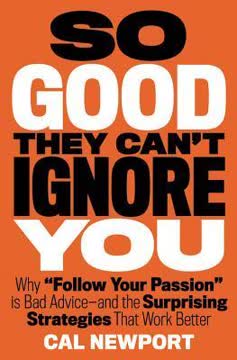

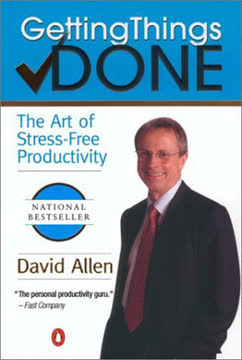

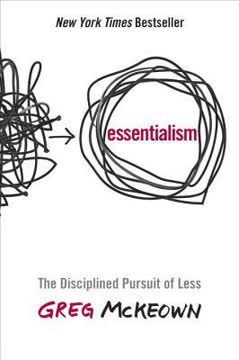
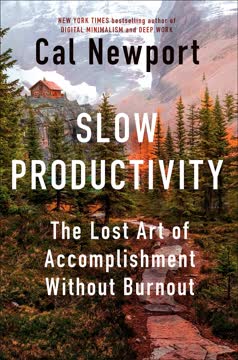
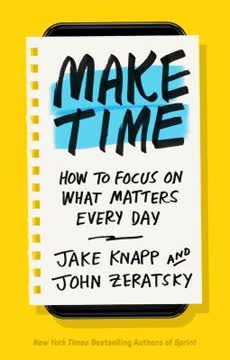
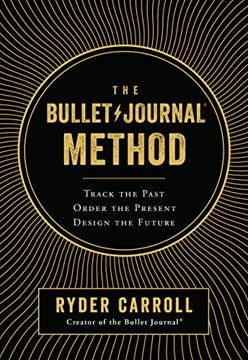

Download PDF
Download EPUB
.epub digital book format is ideal for reading ebooks on phones, tablets, and e-readers.






